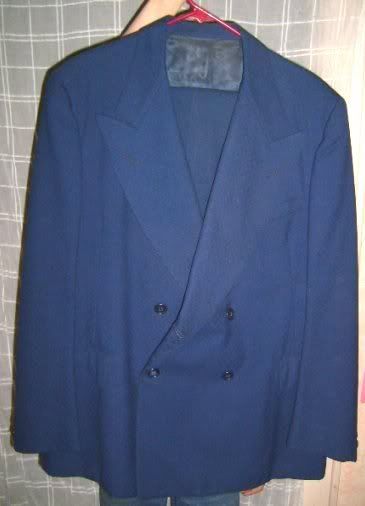J. M. Stovall
Call Me a Cab
- Messages
- 2,152
- Location
- Historic Heights Houston, Tejas
jamespowers said:See? Now that is why I never change my avatar. Its memorable.
Yeah that too.
jamespowers said:See? Now that is why I never change my avatar. Its memorable.
Yeah that too.

frontmanvintage said:As for the blue suit: metal zip would more than likely be post WWII;
frontmanvintage said:1/3 back linings began in the early 50's; before that were the little shoulder petals or full linings, depending on the cost and if it were tailored vs. off the rack. So, I'm saying early to mid 50's on your DB.

Just maybe, a possible clue:Baron Kurtz said:^^ Highlighting part of the problem. I cannot understand for the life of me why Esquire, of all people, would propagate this version of the zipper story. Indeed, copies of Esquire and Apparel Arts of the mid 30s give exactly the opposite information.
Baron Kurtz said:I'd appreciate the impressions of others who have handled significant numbers of 1930s-40s vintage American trousers.

 John Lofgren Monkey Boots Shinki Horsebuttt - $1,136 The classic monkey boot silhouette in an incredibly rich Shinki russet horse leather.
John Lofgren Monkey Boots Shinki Horsebuttt - $1,136 The classic monkey boot silhouette in an incredibly rich Shinki russet horse leather.  Grant Stone Diesel Boot Dark Olive Chromexcel - $395 Goodyear welted, Horween Chromexcel, classic good looks.
Grant Stone Diesel Boot Dark Olive Chromexcel - $395 Goodyear welted, Horween Chromexcel, classic good looks.  Schott 568 Vandals Jacket - $1,250 The classic Perfecto motorcycle jacket, in a very special limited-edition Schott double rider style.
Schott 568 Vandals Jacket - $1,250 The classic Perfecto motorcycle jacket, in a very special limited-edition Schott double rider style. Baron Kurtz said:I officially date this suit (the blue diamond weave DB) to 1937 or thereabouts. In "Everyday fashions of the 1930s, as pictured in the Sears catalogue" page 98, this fabric is featured.
bk